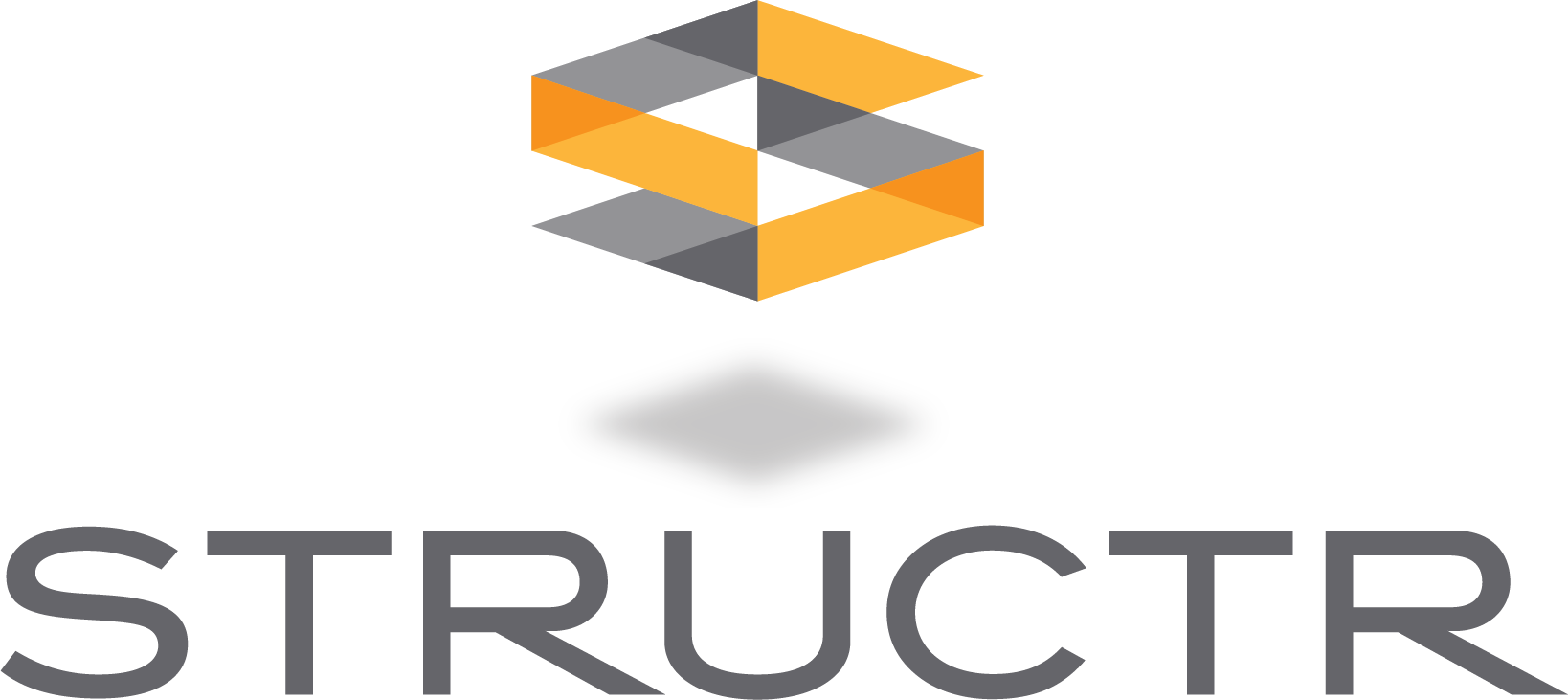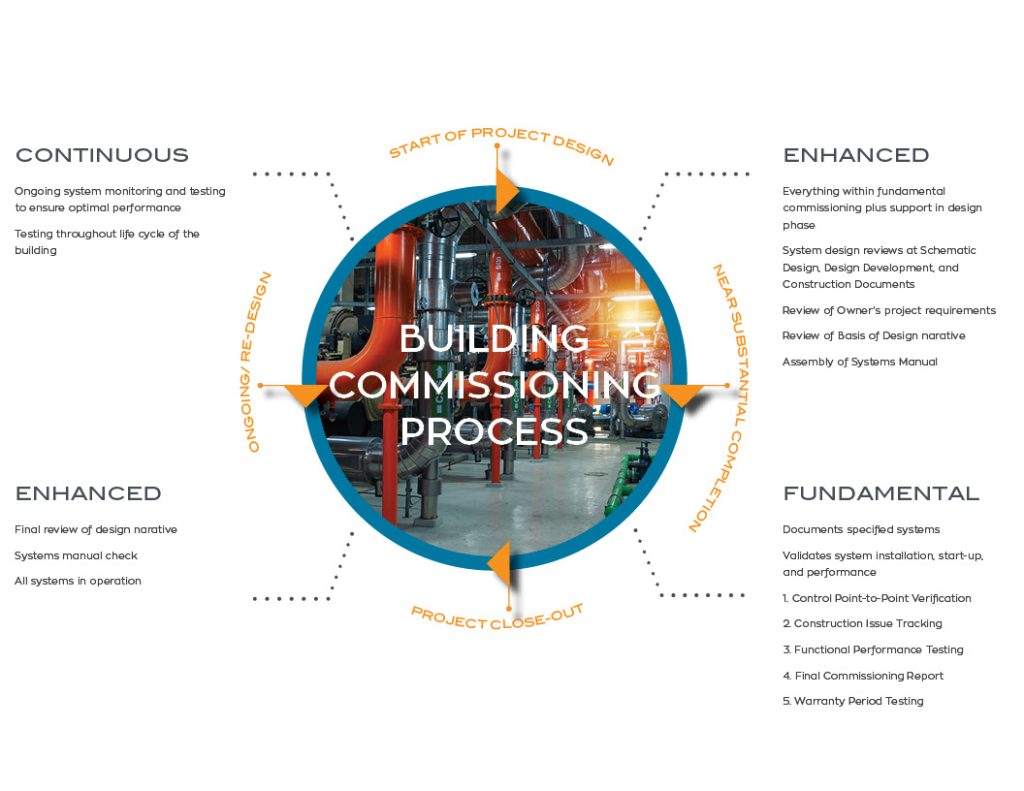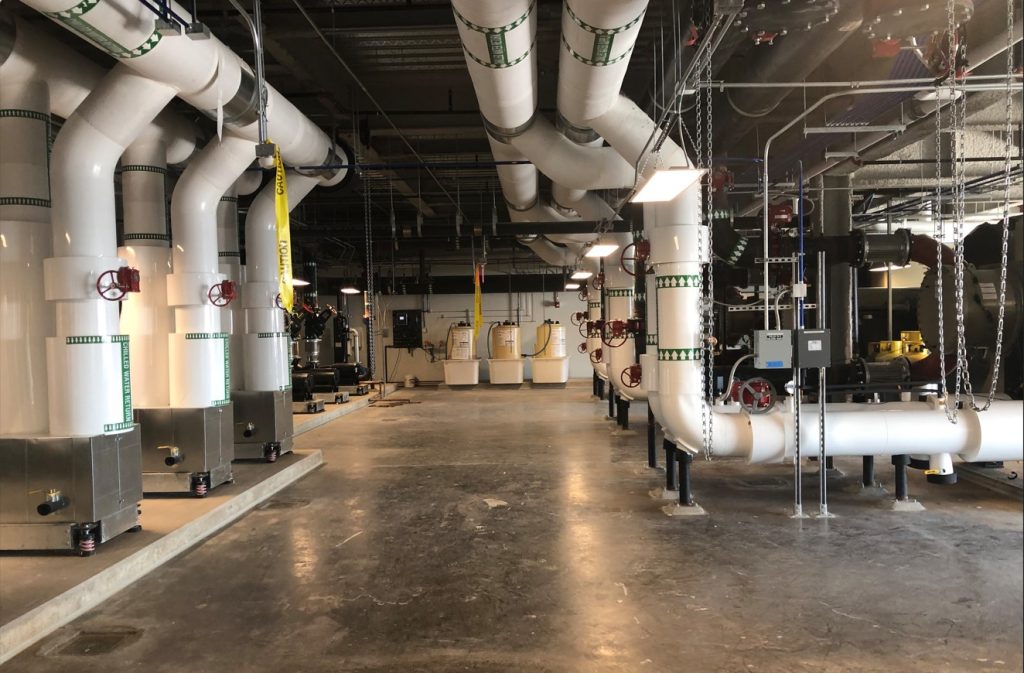

Oct 28, 2022
Building commissioning (Cx) is a professional practice which tests the efficacy and performance of a building’s mechanical and electrical systems by validating the design, installation, and operation through an integrated verification process. This assessment ensures that the systems are quality-checked and functioning as intended.
Third-party commissioning is required for all LEED projects and is broken down into three basic functions:
Each function of project commissioning provides valuable insight into a building’s performance at different phases of its lifecycle. Understanding the goals and needs, based on the phase of the project, a seasoned commissioning agent (CxA) can help guide the client in the right direction. The commissioning process activities accomplished by the commissioning authority are generally based on ASHRAE Guideline 0 requirements.

Fundamental Commissioning
Fundamental Commissioning systematically documents the systems that have been chosen based on LEED requirements and/or the Owner’s Project Requirements (OPR) and validates proper installation, start-up, and performance. Generally, Enhanced Commissioning comes before Fundamental Commissioning, however, to fully understand the building commissioning process, the fundamental stage needs to be explained first.
Fundamental Commissioning includes:
Point-to-point verification is the confirms that the Building Automation System (BAS) is in place and operational. The CxA will statistically sample random system control points to verify the point-to-point report submitted by the control system contractor. For example, validating that the VAV boxes in a facility’s ceiling (point 1) talk to the thermostat on the office wall (point 2). Validating that the two are successfully working together, is point-to-point verification. Additionally, the CxA verifies that the BAS graphics meet the owners’ expectations. Control Point trend studies will be utilized to verify current and future building system performance.
The CxA observes the installation of equipment for potential problems. Any issues identified during observations and checkouts will be noted and reported to the appropriate parties. As part of contractual responsibilities, the design and construction team will develop and implement solutions that address these issues. communication, status updates, and resolution tracking will all be documented and presented to the client.
This part of the commissioning process can arguably be the most important, if not the most well-known. The CxA will develop functional performance test procedures (FPTs) prior to the facility completion, for contractor review. The CxA witnesses these tests to verify proper system operation and adherence to the design document requirements. Testing things like light switches and occupancy sensors, to thermostats and water pumps, confirming proper functionality falls under these performance tests.
The CxA will prepare a final commissioning report for the Owner. The report will contain specific component and system checkout information as well as relevant commissioning-related information regarding system operation. The report content will adhere to the guidelines established by ASHRAE Guideline 0, as applicable.
The CxA will assist the facilities staff in coordinating the resolution of new and outstanding deficiencies by the construction and design teams during the project’s warranty period (up to 12 months out from the end of the construction phase).
Enhanced Commissioning
Enhanced commissioning includes all tasks associated with fundamental commissioning and adds support during the design phase of the project. This includes design review at various stages of the design, including Schematic Design, Design Development, and Construction Documents. Enhanced commissioning also includes the review of the following owner and contractor-assembled documents: Owner’s Project Requirements (OPR), Basis of Design (BOD) narrative, and assembly of the Systems Manual for delivery by the contractor at the completion of the project. The U.S. Green Building Council (USGBC) notes that enhanced commissioning is performed, “To further support the design, construction, and eventual operation of a project that meets the owner’s project requirements for energy, water, indoor environmental quality, and durability.”
Continuous Commissioning
Continuous commissioning (also referred to as retro-commissioning) is an important part of the building’s lifecycle, in which the building’s performance during occupancy is monitored and tested for the life of the building (or contract duration). This process keeps an eye on the building long after building turnover and the issuance of the commissioning final report. Over time, systems can fall out of calibration which leads to less-than-optimal building performance. Monitoring the building after construction, through continuous commissioning, is critical for the building’s energy-saving longevity.

Efficient Commissioning
Third-party commissioning should be included as a functional part of the building process for the owner to have assurance and confidence that the building was built, not only to spec, but will operate efficiently over its lifespan. A facility doesn’t have to be a LEED-certified building to need commissioning; in fact, commissioning should be a quality control measure on every construction project. Having a commissioning agent walk through the building will help the building’s future functionality and sustainability benefits. From reviewing the design for efficiency opportunities and constructability to the 11-month warranty FPTs, commissioning should be a part of the conversation, because it provides long-term benefits to building owners and operators.